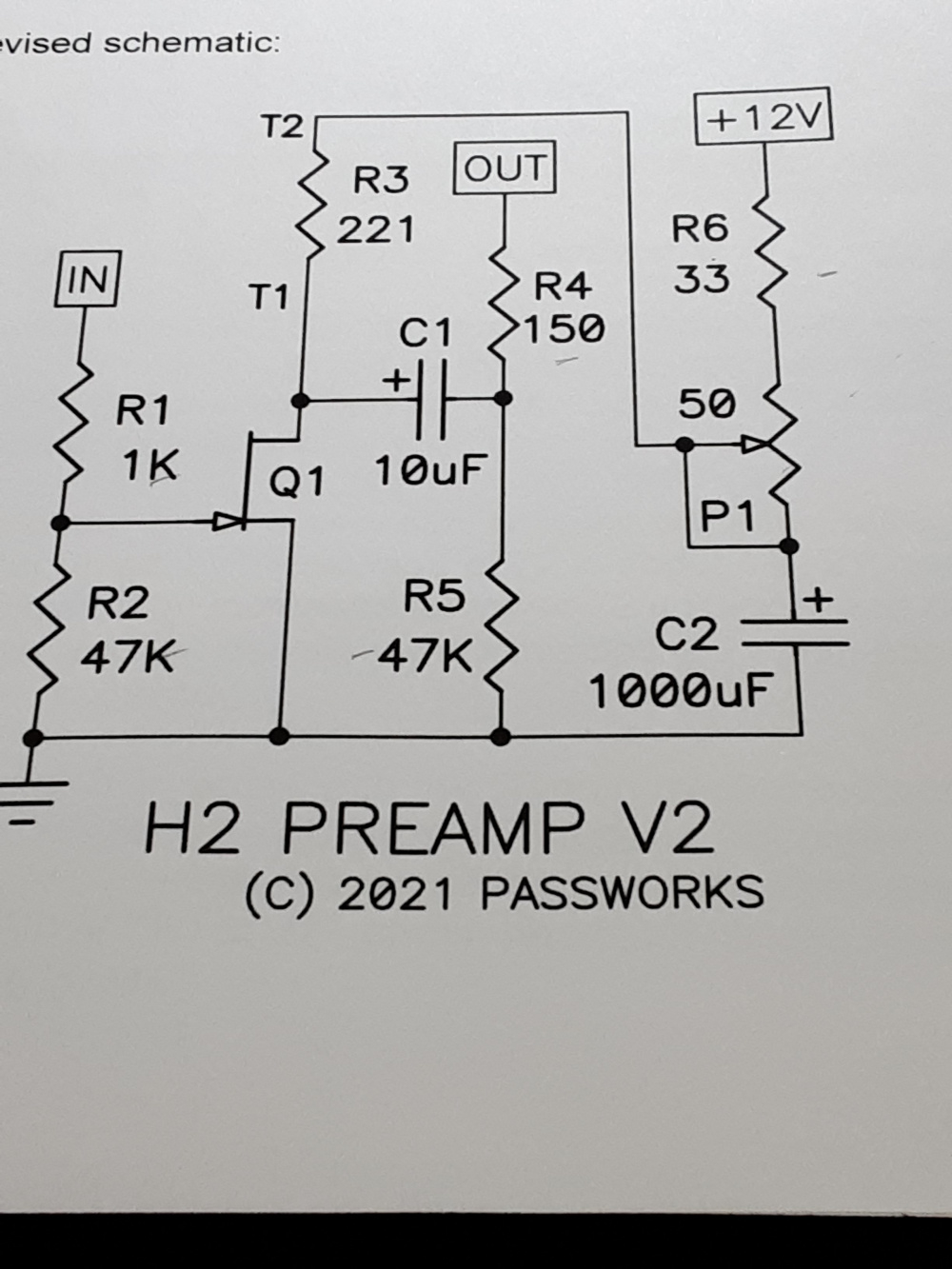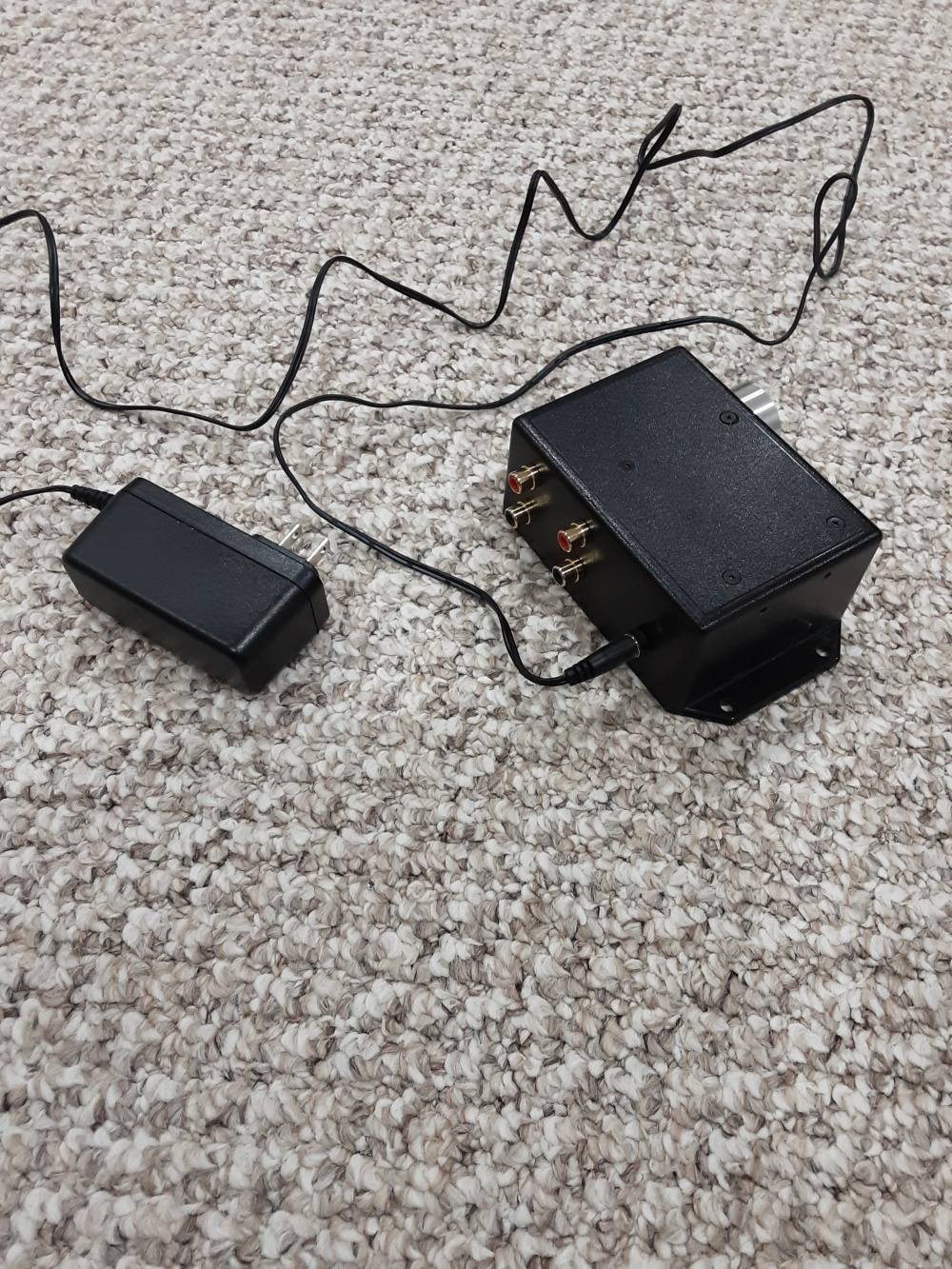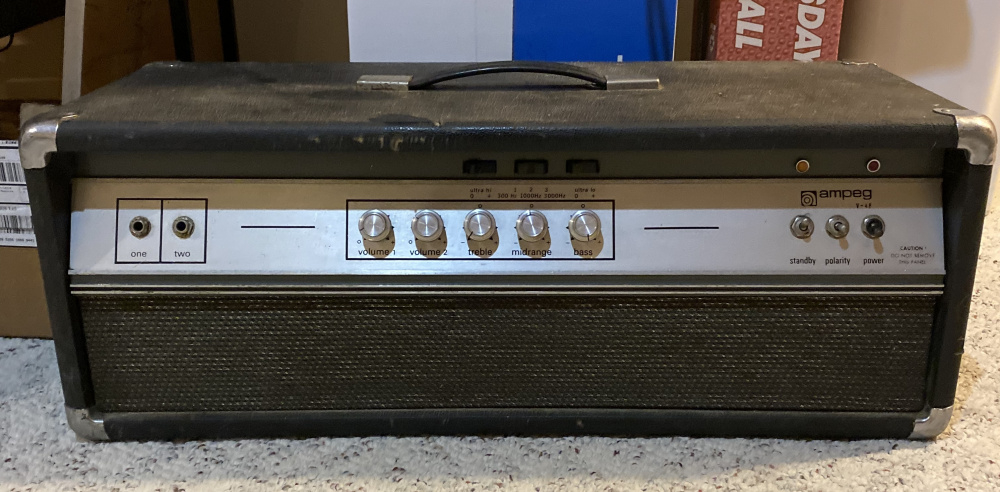Site Links
Howdy, Stranger!
It looks like you're new here. If you want to get involved, click one of these buttons!
Quick Links
Categories
Who's Online (0)
H2 generator/preamp
I put together this Nelson Pass design, there's a package at the diyaudio store with a circuit board and the two jfets for $8. It's a super simple circuit that generates second order harmonic distortion that really could be built point to point easily. The circuit does invert polarity, so I may add an opamp unity gain inverter after it with a switchable bypass, as well as an external potentiometer or switch to adjust the level of distortion. The effect is very interesting, and brings up a number of questions regarding the importance of distortion and its harmonic profile. If you're an ASR fan boy DO NOT build this, as it definitely bring into question that religion. ![]()










Comments
Interesting! I'll have to read up on this. Nelson has some amazing insight to the ear/brain interface. He seems to having lots of fun just doing his own unique thing these days.
I do appreciate the testing Amir does, but feel it's not the whole story regarding how a piece of gear sounds.
"You can't know what you don't know" - and you sure can't measure it if you don't know what it is.
People get too hung up on the numbers. You can use a ton of feedback on an amplifier and it will measure very low distortion, but most likely sound poor and fatiguing, but at the same time people will see those fantastic numbers and say that it has to sound good. I, like many of you have been into audio for a long time and have listened to a fair number of components as well as built some, and there a few things that seem to hold true most of the time. Amplifiers with low to moderate amounts of feedback seem to sound better, as do those with predominantly low order distortion especially those with decendind distortion. Meaning H2 is the highest, followed by H3 and so on. Over the years I've come to realize that most of the numbers mean little to nothing in describing the sound of an amp. It's kind of like listening to a speaker that someone DSPed the shit out of, in order to make it measure perfectly. In one respect it sounds fine, but when really critically listening, it sounds over processed and unrealistic.
I would say that anyone who is curious and has an open mind should build one of this little contraptions, and see that harmonic distortion does not sound like what most people think. I would guess that most equate distortion with sound of clipping or overdriving a woofer, you know truly unpleasant.
This concept was really driven home to me when swapping tubes in a diy pre. One of the tubes was magic on female voice, but top, bottom, and pretty much everything else was sort of meh, or absent. This was one of Toms's old pulled tubes and after some discussion, he wagers that tube was probably on its way out, aka, lots of low order harmonic distortion that complemented voice.
I still remember the first 2A3 amp I built. It was a simple popular no-feedback design by JE Labs. There was something about it I couldn't really describe. Was it accurate - no. It actually rolled off the highs and lows just a bit. There was a little hum you couldn't dial out. But it sure was engaging. It made you want to listen all night long.
I've read that with PA systems, most non-technical people prefer the sound of a standard vented sub box over horns because of the familiar distortion profile. And look at the popularity of vintage recording gear. Compressors, EQs, mic preamps bring big bucks because of their color, warmth, & "analog sound".
Looks like that little unit plays off why tube amp distortion is enjoyable.
Years ago I built and modified a tube buffer/preamp kit from http://tubes4hifi.com to add a little ‘warmth’ to my day. I took one of their tube preamps, which is a two-stage and (with their help) modified to a single-stage buffer.
I did so as I a) wanted the simplicity of a single-stage and, b) felt that my sources had enough umph to drive my amp directly and/or use as a buffer between a preamp (a/v) and amp, which I do now. I bi-amp my speakers (between the woofer and mid-tw coax) and place this before the mid/tweeter amp channel.
One additional modification was to provide a slight bias adjustment (toggle on front) via resistor selection. This is normally done on power tubes to adjust the curve, but this being a pre I thought I’d give it a go.
What a beautiful, sweet build!
Thx, but unlike many builders here, I don’t know if I have the skill-set to build outright from a schematic.
This was a kit that I modified - cut down the box (you can see I used the back and bottom) to a ½ width size, put it a copper divider to ~isolate the transformer, and cut some wood and hammered a grill screen into a top.
That tube pre is pretty bitchin👍🏼 Nice job
Here's the H2 generator I'm currently working on:
You win, your's is prettier.
Yay! I'm finally a winner!
Not so fast, it's only compared to me.
Whatever.....

...all the H2's
SE 6V6 with an __SN7 driver?
Great eyes Tom. Yes, Russian copies of 6V6's, SET with Edcor 15 Watt OP trans, zero feedback, and one of the 6SN7's you gifted me